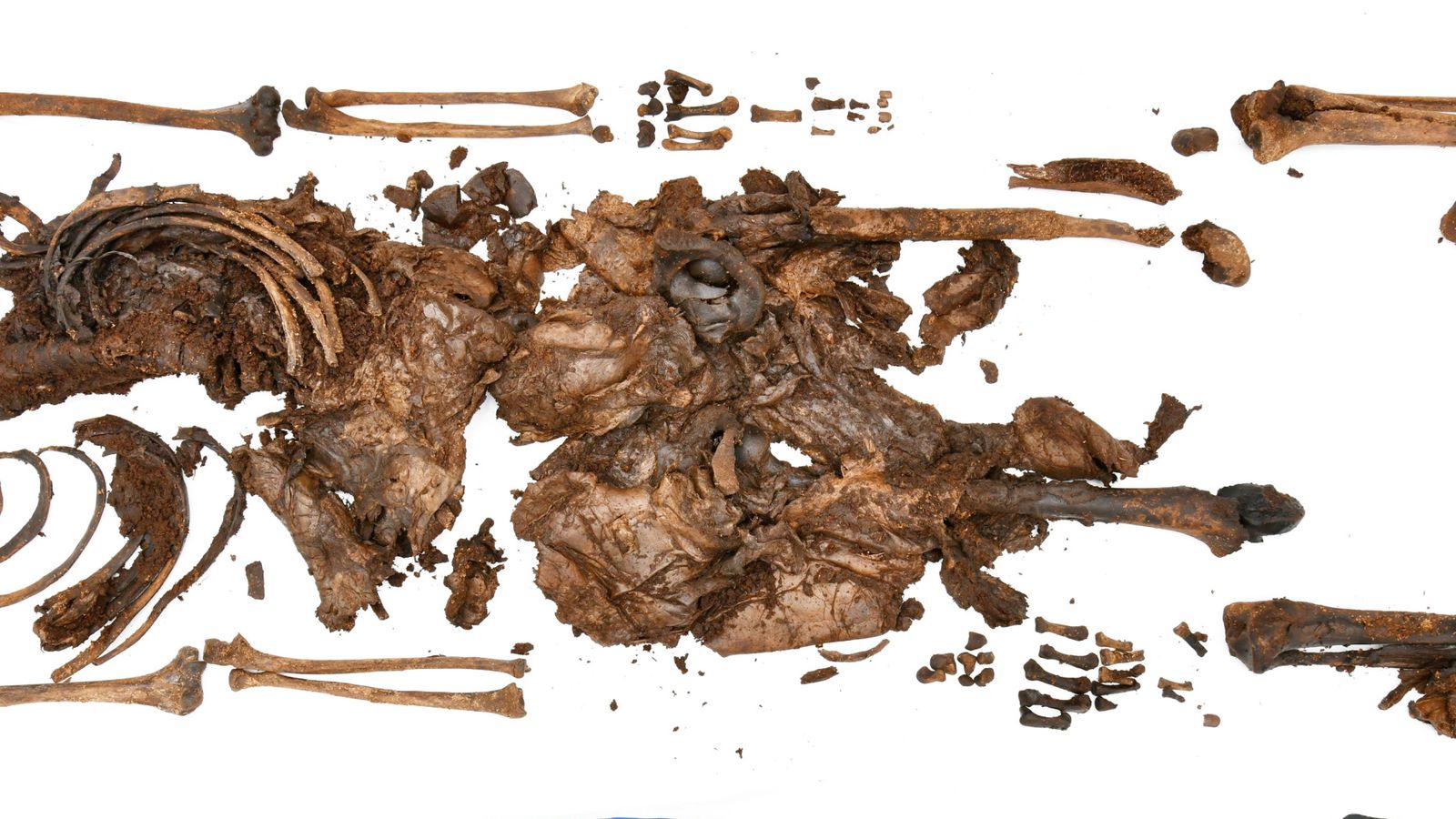Police have uncovered well-preserved human remains thought to be up to 2,500 years old in a bog in Northern Ireland.
The Police Service of Northern Ireland (PSNI) said officers could not initially be sure if the remains were ancient or the result of a more recent death.
The PSNI’s Archaeological Unit excavated a number of body parts, including fingers and arm and leg bones, after human remains were found on the surface of peatland in Bellaghy, County Londonderry, in October 2023.
The parts were well-preserved and also had the presence of partial skin, fingernails of the left hand, toenails and possibly a kidney.
Experts at Queen’s University in Belfast carbon-dated the remains and found them to be between 2,000 to 2,500 years old.
The skeletal remains are believed to be from a male aged between 13 to 17 when he died.
His cause of death is unclear.
PSNI Detective Inspector Nikki Deehan said: “We proceeded to excavate the body with full forensic considerations in a sensitive and professional manner.
“This approach also ensures that any DNA evidence could be secured for any potential criminal investigation.
“Ultimately this wasn’t the case in this instance.”
The excavations first uncovered a tibia, or shin bone, and fibula – the smaller of the two bones in the lower leg.
A humerus, which is the bone of the upper arm, and an ulna and radius, bones found in the forearm, were also among the first excavated.
Further investigation revealed more bones belonging to the same individual.
About five metres south of the surface remains, the bones of a lower left arm and a left femur, or thigh bone, were located protruding from the ground.
Further examination of the area between the main body and the surface remains located additional finger bones, fingernails, part of the left femur and the breastbone.
A post-mortem examination was carried out by a certified forensic anthropologist.
Ms Deehan said: “The well-preserved nature of the body meant radiocarbon dating could be used to ascertain the time of death.
“The radiocarbon dates have placed the time of death between 2,000-2,500 years ago, approximately 500BC.
“This is the first time radiocarbon dating has been used on a bog body in Northern Ireland, and the only one to still exist, making this a truly unique archaeological discovery for Northern Ireland.”
Read more UK news:
Families of Nottingham attack victims ‘let down’
Sturgeon’s scathing take on Johnson revealed in WhatsApps
Time to consider UK conscription – ex-NATO commander
The radiocarbon dating was conducted by experts at the 14Chrono Centre at Queen’s University.
Explaining the process, Dr Alastair Ruffell said: “To ensure the highest possible standards in forensic recovery of human remains were maintained, we conducted two phases of high-resolution ground penetrating radar survey at the site.
“The results showed no indications of further human remains.
“The remains were discovered at approximately one metre below the current land surface which matches the radiocarbon estimates.
“In addition, they were amongst a cluster of fossil tree remains suggesting that the body may have died or been buried in a copse or stand of trees, or washed in.”
The bog body was found in an area made famous by the work of the late Nobel laureate poet Seamus Heaney.
The land is owned by Northern Ireland’s department of agriculture.
The remains will now be transferred to the ownership of National Museums NI, a museum service in the country.






